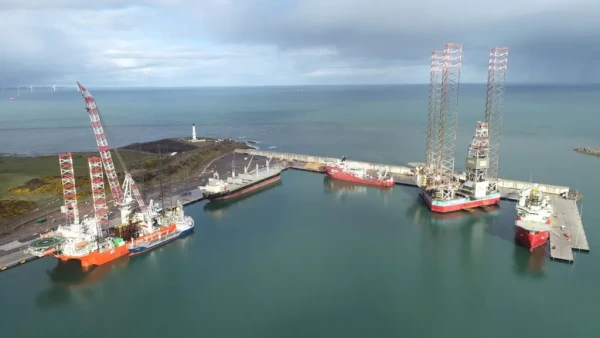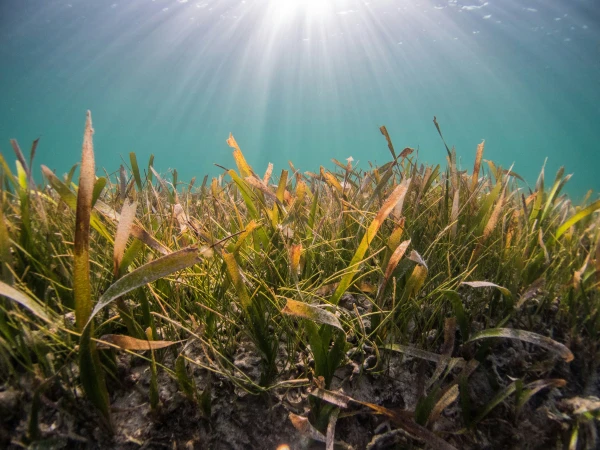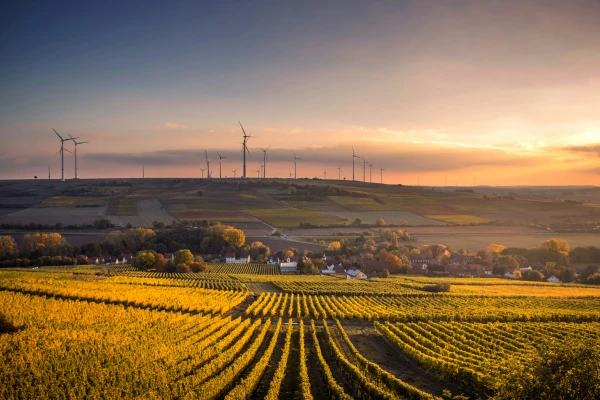Our Views
The Blue Economy: definition, opportunities and problems
The concept of the blue economy has been making waves in recent years as societies around the world strive for more sustainable, responsible, and equitable ways of utilizing our planet's resources. In this article, we dive into the depths of the blue economy to uncover its meaning, principles, challenges, and opportunities, from our experience as Blue Economy consultants.
What is the Meaning of Blue Economy?
The blue economy is a holistic and innovative approach to sustainable development, emphasizing the responsible use and preservation of oceanic resources. It seeks to strike a balance between economic growth, environmental protection, and social equity within the context of our oceans and coastal areas.
What Are the Elements of the Blue Economy?
The blue economy comprises various sectors, including fisheries, aquaculture, maritime transport, renewable energy from the sea (e.g., offshore wind farms), coastal tourism, and marine biotechnology. These elements contribute to economic growth while conserving marine ecosystems:
- Fisheries and Aquaculture
- Maritime Transport
- Coastal Tourism and Hospitality
- Offshore Renewable Energy
- Marine Biotechnology
- Marine and Coastal Infrastructure
- Shipping and Ports
- Ocean Exploration and Research
- Underwater Mining
- Marine Conservation and Biodiversity
- Water Sports and Recreation
- Desalination and Water Management
- Marine Renewable Resources
- Shipbuilding and Repair
- Ocean Education and Training
- Marine Pollution Control
- Coastal Zone Management
- Ocean Governance and Policy
- Marine Insurance and Finance
- Sustainable Seafood Production
- Marine Technology and Innovation
- Ports and Logistics
- Cruise Tourism
What Are the Three Pillars of the Blue Economy?
The blue economy is often represented by three interconnected pillars: economic, social, and environmental. It strives to balance economic growth, social equity (such as employment and poverty reduction), and environmental preservation. This trilateral approach ensures long-term sustainability.
In the realm of the blue economy, three interconnected pillars form the foundation for sustainable development: the economic, social, and environmental dimensions. These pillars provide a comprehensive framework for balancing economic growth, social equity, and environmental preservation within the context of our oceans and coastal regions.
1. Economic Pillar: Navigating Prosperity
The economic pillar of the blue economy revolves around harnessing the vast economic potential of our oceans and coastal areas while ensuring responsible resource management. Key components include:
Marine Industries: This encompasses sectors such as fisheries, aquaculture, maritime transport, offshore energy, and marine biotechnology. By optimizing these industries, the blue economy seeks to drive economic growth, create jobs, and foster innovation.
Resource Efficiency: Resource efficiency lies at the core of the economic pillar. It involves responsible harvesting of marine resources, reducing waste and pollution, and maximizing the value derived from our oceans.
Sustainable Business Practices: Encouraging businesses to adopt sustainable practices, including eco-friendly technologies and green supply chains, is a central element. Sustainable businesses not only thrive economically but also contribute to environmental preservation.
2. Social Pillar: Empowering Communities
The social pillar emphasizes the importance of social equity and community well-being within the blue economy framework. Its key components include:
Livelihoods: Sustainable marine industries provide livelihoods to millions of people worldwide, particularly in coastal communities. The social pillar ensures that these livelihoods are secure, fair, and inclusive.
Local Engagement: It promotes local participation and decision-making, recognizing that communities living in proximity to marine resources should have a voice in how those resources are managed and utilized.
Social Inclusivity: The social pillar advocates for gender equality and inclusivity, ensuring that both men and women have equal opportunities and access to benefits within the blue economy.
3. Environmental Pillar: Protecting Our Oceans
The environmental pillar places paramount importance on safeguarding the health and resilience of our oceans and coastal ecosystems. Key components include:
Biodiversity Conservation: Protecting marine biodiversity is critical. This pillar advocates for the preservation of marine ecosystems, endangered species, and the overall balance of marine life.
Ecosystem Resilience: Promoting resilience in the face of climate change, pollution, and habitat destruction is essential. Measures like marine protected areas and sustainable fishing practices contribute to ecosystem health.
Environmental Stewardship: Responsible resource management and reducing the ecological footprint of human activities are central to the environmental pillar. It recognizes that the well-being of people and economies depends on a healthy ocean environment.
In conclusion, the three pillars of the blue economy—economic, social, and environmental—work in harmony to foster sustainable development. By balancing economic prosperity, social inclusion, and environmental stewardship, the blue economy offers a holistic approach to ensure that our oceans and coastal regions thrive for generations to come.
What is an Example of a Blue Economy?
An excellent example of a blue economy endeavor is sustainable fishing. Instead of overexploiting fish stocks, this approach encourages responsible harvesting, reducing bycatch, and promoting the long-term health of marine ecosystems. In turn, it supports coastal communities by ensuring a steady and sustainable source of income.
Certainly, two notable success stories of blue economy strategies from around the world are the following:
1. Norway's Sustainable Fisheries Management:
Norway is a global exemplar in the sustainable management of fisheries—a key component of the blue economy. The country's success story lies in its commitment to responsible fishing practices and robust resource management.
Key Features:
Quota System: Norway implemented a quota system that allocates specific catch limits to fishermen and fishing vessels. This prevents overfishing by ensuring that fish populations are not depleted beyond sustainable levels.
Technological Innovation: The Norwegian fishing industry embraced innovation, with state-of-the-art technology such as GPS, sonar, and vessel monitoring systems. These tools help fishermen target specific species, reduce bycatch, and minimize environmental impact.
Research and Collaboration: Norway invests significantly in fisheries research and cooperates with international organizations and neighboring countries. This collaborative approach ensures the health of shared fish stocks.
Results:
Norway's sustainable fisheries management has not only preserved marine ecosystems but also maintained a thriving fishing industry. It ranks among the world's top seafood exporters, demonstrating that economic prosperity can coexist with environmental responsibility.
2. The Seychelles' Debt-for-Nature Swap:
The Seychelles, an island nation in the Indian Ocean, faced mounting debt and challenges associated with climate change and overfishing. In response, it embarked on an innovative blue economy strategy.
Key Features:
Debt Restructuring: The Seychelles renegotiated its national debt and secured funding through a "debt-for-nature" swap. This involved converting a portion of its debt into funding for marine conservation efforts.
Marine Protected Areas: The country established a network of marine protected areas (MPAs) covering a significant portion of its Exclusive Economic Zone (EEZ). These MPAs safeguard critical habitats, allowing marine ecosystems to recover.
Sustainable Fisheries: The Seychelles implemented sustainable fisheries management practices, including seasonal closures, size limits, and quotas. These measures protect fish populations and support the livelihoods of local fishermen.
Results:
The Seychelles' blue economy strategy has yielded impressive results. Marine life within the MPAs has rebounded, attracting divers and eco-tourists. Sustainable fisheries practices have ensured the long-term viability of the fishing industry. Additionally, the debt-for-nature swap reduced the nation's financial burden while conserving its unique marine environment.
These two success stories demonstrate that the blue economy is not just an environmental strategy but also a pathway to economic prosperity, ecological resilience, and social well-being when approached with innovative and responsible practices.
What Are the Problems with the Blue Economy?
Challenges in implementing the blue economy concept include illegal fishing, pollution, habitat destruction, and climate change. Additionally, issues related to governance, international cooperation, and the equitable distribution of benefits need to be addressed.
Who Invented Blue Economy?
The term "blue economy" was popularized by Belgian economist and entrepreneur Gunter Pauli. He advocated for the sustainable use of oceanic resources as a response to global environmental and economic challenges.
What Are the Benefits of the Blue Economy?
The blue economy presents numerous benefits, including economic growth, job creation, food security, renewable energy sources, and biodiversity conservation. By promoting responsible practices, it ensures the long-term viability of our oceans and coastal regions.
What Are the Drivers of the Blue Economy?
The key drivers of the blue economy include scientific advancements, technological innovation, policy reforms, and increased awareness of the importance of oceans and coastal regions. Additionally, the growing demand for sustainable products and services plays a pivotal role in propelling the blue economy forward.
In essence, the blue economy represents a crucial shift towards a more balanced and sustainable relationship between humanity and our oceans, and it holds the promise of a brighter, more prosperous future for all.
Our experience as Blue Economy consultants
We have a comprehensive range of services tailored to the unique needs of the Blue Economy. We offer expert guidance and strategic solutions to clients worldwide. Whether you are involved in tourism, value chain analysis, or port development, we bring a wealth of knowledge and a proven track record in delivering successful outcomes.
If you are looking for Blue Economy consultants, please, check our project experience portfolio:
- Strategic roadmap for The Blue Economy in Barbados
- Digital skills training for public and private actors in the tourism industry
- Feasibility Study for a new marina in the island of San Andrés through PPP
- Economic valuation of port concessions
- MariNAs and ToUrist Ports through DEep Learning technologies & Video Analytics (Nausea)
- Blue Robotics for Sustainable Eco-friendly Services (Blue RoSES)










